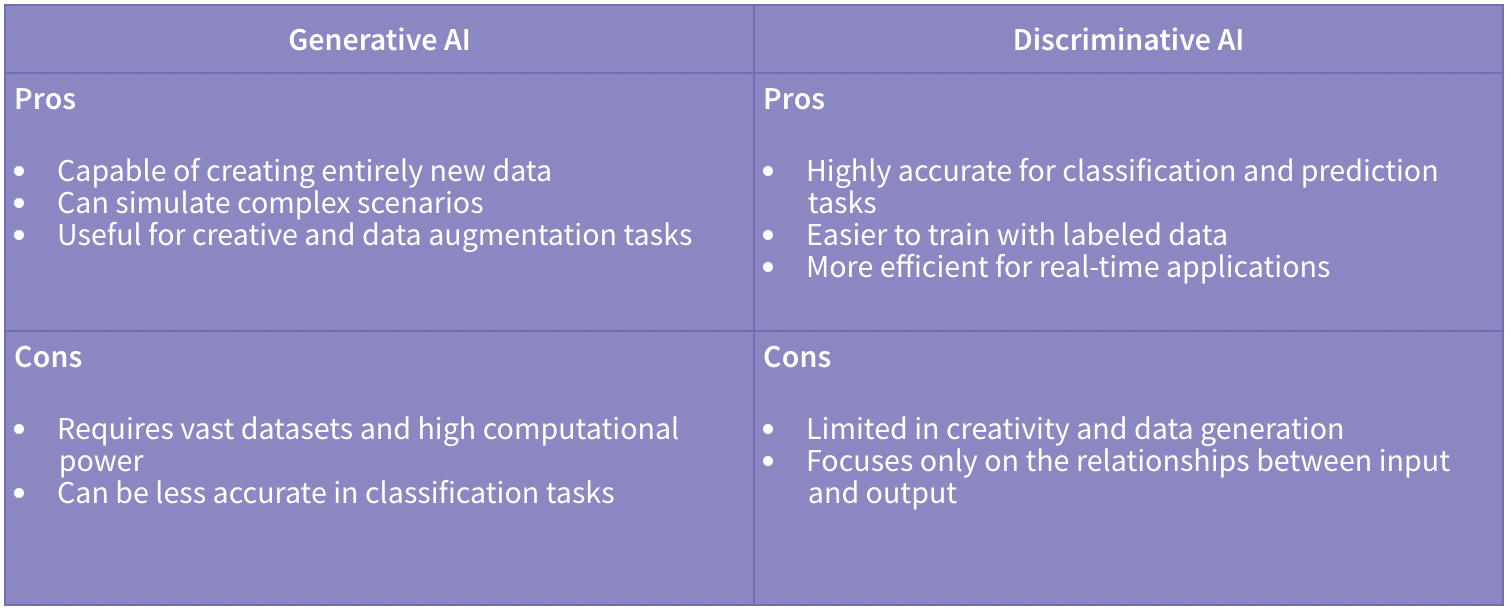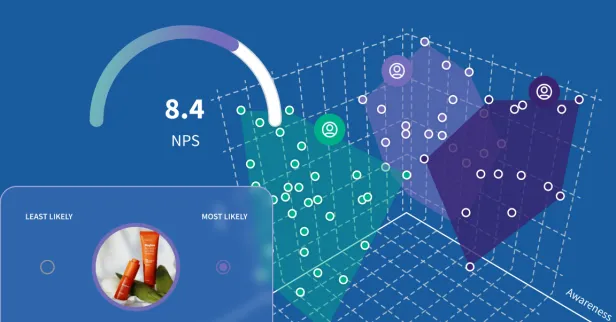The vast majority of brands and agencies are either in a phase of exploring Generative Artificial Intelligence (Gen AI) capabilities and their application to business operations, or in the subsequent phase of implementation. Exponential progress made so far has already transformed how we interact with such technology, offering innovative ways to create content and generate insights, among other benefits. This article will cover the fundamentals of generative AI, compare it with traditional AI approaches, and explore how SightX leverages this technology through its generative AI-powered research assistant, Ada.
What is Generative AI and How Does it Work?
Generative AI refers to a subset of artificial intelligence that uses models capable of creating new data rather than just identifying patterns or making predictions. It’s powered by sophisticated algorithms, primarily deep learning networks trained on vast datasets. These models learn the underlying structure of data, enabling them to generate new, similar outputs.
For example, a generative AI model trained on millions of images can generate realistic images based on specific prompts. An example in the context of consumer research would be writing a prompt along the lines of “Generate for me five concept images for my company logo in the industry of wellness”. Similarly, language models like GPT-4 are trained on vast text datasets to produce human-like content such as survey questionnaires for generating synthetic responses to complement samples. These models rely heavily on neural networks, particularly Generative Adversarial Networks (GANs) and Transformer architectures, which process and create data in ways that mimic human creativity and comprehension.
What is the Main Goal of Generative AI?
The primary objective of generative AI is to create new and original content that closely mimics or enhances real-world data. Unlike traditional AI systems, which mainly classify and make predictions based on existing data, generative AI aims to innovate and expand the capabilities of machines to produce novel outputs.
For instance, in content marketing, generative AI can generate image and video collateral in seconds rather than weeks based on a brief description or input. It can automate the creation of marketing copy, personalize customer interactions, and simulate scenarios for decision-making processes. The goal is to augment human creativity and efficiency, enabling businesses to scale their operations and provide personalized customer experiences.
Generative AI vs. Discriminative AI: Key Differences
Discriminative AI and generative AI are two branches within the broader AI spectrum, and they serve different purposes:
Discriminative AI: These models focus on determining the relationship between input data (features) and their labels (outcomes). They work to classify or predict based on given data, such as establishing whether an image contains a cat or a dog. Examples include logistic regression, decision trees, and support vector machines.
Generative AI: In contrast, generative models aim to understand how the data is structured to generate new data similar to the original dataset. While discriminative models are adept at categorization and prediction, generative models can create new images, text or even entire datasets.
Pros and Cons of Generative AI and Discriminative AI

Other Comparisons: Generative AI vs. NLP and OpenAI
Generative AI vs. NLP (Natural Language Processing)
Natural Language Processing (NLP) is a subfield of AI focusing on understanding and processing human language. While NLP has been integral to building chatbots, language translation tools, and sentiment analysis systems, generative AI represents a significant evolution beyond traditional NLP.
NLP: Primarily deals with analyzing, understanding, and responding to text-based input. It's more rule-based and focuses on tasks like translating text or summarizing information.
Generative AI: Uses NLP as a foundational component but extends its capabilities. It doesn't just understand language but can generate entirely new and contextually appropriate content, such as drafting a research paper, responding creatively in a conversation, or even simulating customer interactions based on historical data.
Generative AI vs. OpenAI
OpenAI is a leading AI research organization that has developed some of the most prominent generative AI models, including GPT (Generative Pre-trained Transformer). The distinction here is between the organization (OpenAI) and the technology (generative AI) itself.
Generative AI: Refers to the broader technology of creating models capable of producing new content based on data.
OpenAI: A specific company that develops and enhances generative AI models. The work done by OpenAI, such as creating GPT, DALLE, and Codex, has set industry benchmarks, but it represents a slice of the larger generative AI ecosystem. Other top competitors to OpenAI include Anthropic, Hugging Face, Google's Deep Mind, and Microsoft AI.
Generative AI at SightX
At SightX, we leverage the power of generative AI to bring insights and automation to the forefront of consumer research. Our proprietary tool, Ada, harnesses this technology to provide tailored solutions to the consumer research industry, to accelerate their time to insights.
Ada: Revolutionizing Consumer Research
Ada is SightX's AI-powered consultant, designed to integrate generative AI capabilities for advanced consumer research analysis. By using Ada, consumer insights leaders and marketers can:
Design their survey content or experiment: Via a series of prompts, user can generate their survey content directly on the SightX platform in seconds, depending on the required iterations.
Conduct text analytics: Ada utilizes text-based models to conduct qualitative analysis including sentiment analysis and categorical analysis.
Create executive summaries: While SightX automates quantitative analytics, Ada utilizes generative AI text-based models to interpret survey results and generate executive summaries and recommendations.
Using clear and direct prompts can make all the difference when working with Generative AI tools. So you'll want to bookmark these resources:
- 10 Prompt-Writing Tips for Using Generative AI Tools
- 28 Prompts You Can Use with Ada for Better Studies & Deeper Insights
Ada's use of generative AI doesn't stop at merely automating tasks; it aims to enhance the quality and accuracy of insights delivered to customers. By combining the power of large language models with SightX's quantitative analytics, Ada brings a new level of efficiency and creativity to consumer research.
Generative AI is a transformative technology with vast potential, offering capabilities far beyond traditional AI approaches. By creating new data, content, and solutions, it's redefining industries and enhancing human creativity. At SightX, we're excited to be at the forefront of this evolution, empowering consumer insights leaders and marketers with innovative tools like Ada to harness the full potential of generative AI.



